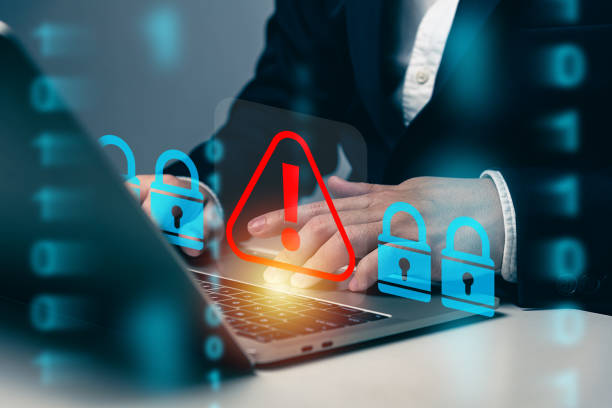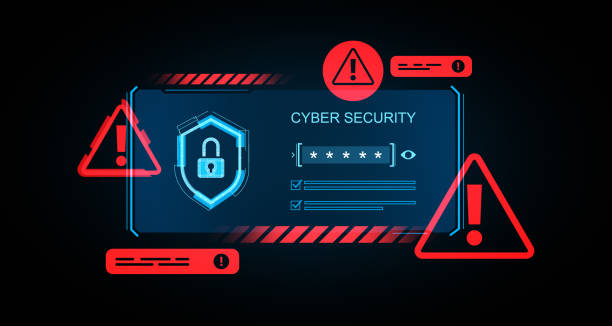Common Cybersecurity Mistakes to Avoid
The current computer and internet-based virtual world demands this security measure as information acts as a fundamental business requirement. This document shows how improved technology leads to enhanced complex system attacks. The negligence of critical mistakes by organizations and individuals leads them to falling victim to cyber-attacks which permit data theft alongside vital information loss. Your knowledge of the Common Cybersecurity Mistakes to Avoid will allow you to protect your personal details and business information during internet access.

The following article provides necessary information about the Common Cybersecurity Mistakes to Avoid and presents various strategies to enhance your digital security. Any user or business entity must understand these mistakes to decrease their exposure to cyber threats.
1. Using Weak Passwords
The surveyed individuals rated using weak recognizable passwords as one of the most unsafe computer security practices. Users mostly select name along with surname together with phone number and date of birth information or basic number patterns including “123456” or “password” as their passwords. The ability to crack weak passwords easily exists because multiple apps attempt all password combinations during authentication attempts.
Using memory as a solution for login information retrieval became outdated as users need to establish individual strong passwords for each separate account. The combination of letters, numbers in various forms and symbols should appear in every constructed password. To increase password security you need to access password manager services for proper security management.
2. Reusing Passwords across Multiple Sites
The habit of sharing the same password throughout necessary accounts is a widespread mistake seen in various people. This convenient password practice leaves all accounts prone to security breaches that can expand to multiple platforms. The attacker can break into your additional accounts after obtaining access to your website credentials because they share the same authentication details.
The best practice when creating passwords involves generating fresh security keys for every account since compromised security on one profile will not impact your others. A password manager benefits users by helping them securely manage various passwords.
3. Neglecting Software Updates
The main organization security threat stems from outdated software because it provides hackers with clear entry points to breach corporate network systems. Multiple software updates work as security fixers to cover these vulnerabilities that exist within systems. Organizational systems remain vulnerable to hackers when maintenance updates are not implemented because this action creates a susceptible target.
To lower hacker potential exploit points you should make both your operating system and your applications and antivirus software update automatically.
4. Not Using Two-Factor Authentication (2FA)
Enabling the two factor authentication stands as the excellent method for maintaining account security because it demands users to provide something they possess along with their password.
Activate 2FA automatically when any account supports this security feature. The additional security mechanism coats the base password thus creating an obstacle that hackers find extremely challenging to infiltrate even with knowledge of the password.
5. The guide encompasses these topics under the category of Clicking on Suspicious Links and Emails
Intruders exploit phishing techniques which remain as one of the most common cyber tactics to trick users into sharing their details intentionally. Electronic communications send through emails and text messages contain linked files and attachments which either seek personal data or allow malware to infiltrate your device.
Always steer clear of unidentified sites and addresses when you should avoid downloading attachments and click through links. Users should verify the identity of sender until they establish trust before proceeding to confirm ownership of the link or website either through original site or service endpoint.
6. Failing to Backup Data
Public members should avoid falling into a major cybersecurity mistake by failing to create backup copies for their critical system information. Ransomware emerges as another type of threat because it blocks computer file access so users become restricted from their systems. All available backups become obsolete when data experiences permanent loss because there are no saved backups available.
People should follow these steps by copying their data to both an external hard drive and an online storage service every day. Backup solutions should be stored and encrypted securely because such protection measures help reduce the possibility that unauthorized actors could gain access or steal backup data.
7. Security settings evaluation violations cause the majority of security problems in devices and applications.
Users frequently fail to properly establish security for their devices although it remains at least an occasional practice. The network remains vulnerable to attack because default setup configurations allow attackers to detect it. Numerous apps gather undesired user information at the same time as failing to offer message encryption automatically.
Prioritize investing a portion of your current time to establish full security functionality and the best privacy standards for all devices along with programs. Remove all Anniversary superfluous access permissions and make them encrypted together with strict privacy protections.
8. Using Public Wi-Fi without Protection
Open wireless networks located in coffee shops as well as airports and hotels remain defenseless to hackers because they lack any password system. People who use Wi-Fi without VPN security risk losing their private data to attackers known as Cybercriminals.
When using the network of any specific area people should avoid accessing their banking accounts or email messages. Users of public terminal access must protect their networks with reliable Virtual Private Networks to achieve encrypted connections.
9. Not Educating Employees or Family Members on Cybersecurity
The cybersecurity measures function for protecting all devices as well as user accounts while protecting all technology regardless of identity. A business puts itself at risk of employee errors which endanger organizational security unless workers receive proper cybersecurity training. The lack of appropriate education makes family members susceptible to multiple forms of cyber threats until they gain enough understanding about Internet security.
All members of your household and every employee needs training about cyber security fundamentals which protect them from phishing attacks or force them to create solid passwords and prevent installation of unverified software programs.
10. The author identifies underestimating mobile security as the paper’s initial subject matter.
Mobile devices require utmost security protection in current times similarly to how one protects personal computers. People want to implement protection features on their mobile phones and devices yet their implementation remains inadequate.
Users should always activate screen locks combined with password-protection for phone biometric functions including fingerprint and facial recognition along with security applications which protect against smartphone malware and unauthorized access.
11. Many people ignore security risks created by Internet of Things (IoT) Products during product selection.
Homeowners and office workers usually maintain various network-connected devices including smart thermostats alongside cameras and voice assistants. The composition of the IoT suffers from security breaches because hackers discover unprotected devices.
When securing IoT devices always modify the built-in passwords and keep them on a protected wireless network. The security of devices will increase when users maintain a separate Wi-Fi network dedicated to IoT devices instead of the main ones.
Conclusion: Safeguarding Your Digital Presence
Understanding these Common Cybersecurity Mistakes to Avoid makes it possible to take protective measures that defend your digital life. The continuous nature of cybersecurity demands permanent attention while acquiring knowledge about threats along with obtaining suitable security tools. The safeguards mentioned here help organizations and individuals reduce cyber risks when requiring access to their accounts or developing systems and applications. The prevention of technology-based problems at their outset remains better than implementing solutions post-event.

FAQs
The main reason why people advocate for two-factor authentication (2FA) stems from what?
Two-factor authentication (2FA) stands out as a well-known security protocol that needs password and identification from a different source for account protection. The hackers encounter difficulties when they possess knowledge about your login information because this includes password access.
Different online activities have varying requirements for password update schedules is it?
The most beneficial security measure for passwords consists of their regular updates each half-year period. Set new account passwords right away along with two-factor authentication activation when you believe a hack occurred.













0 Comments